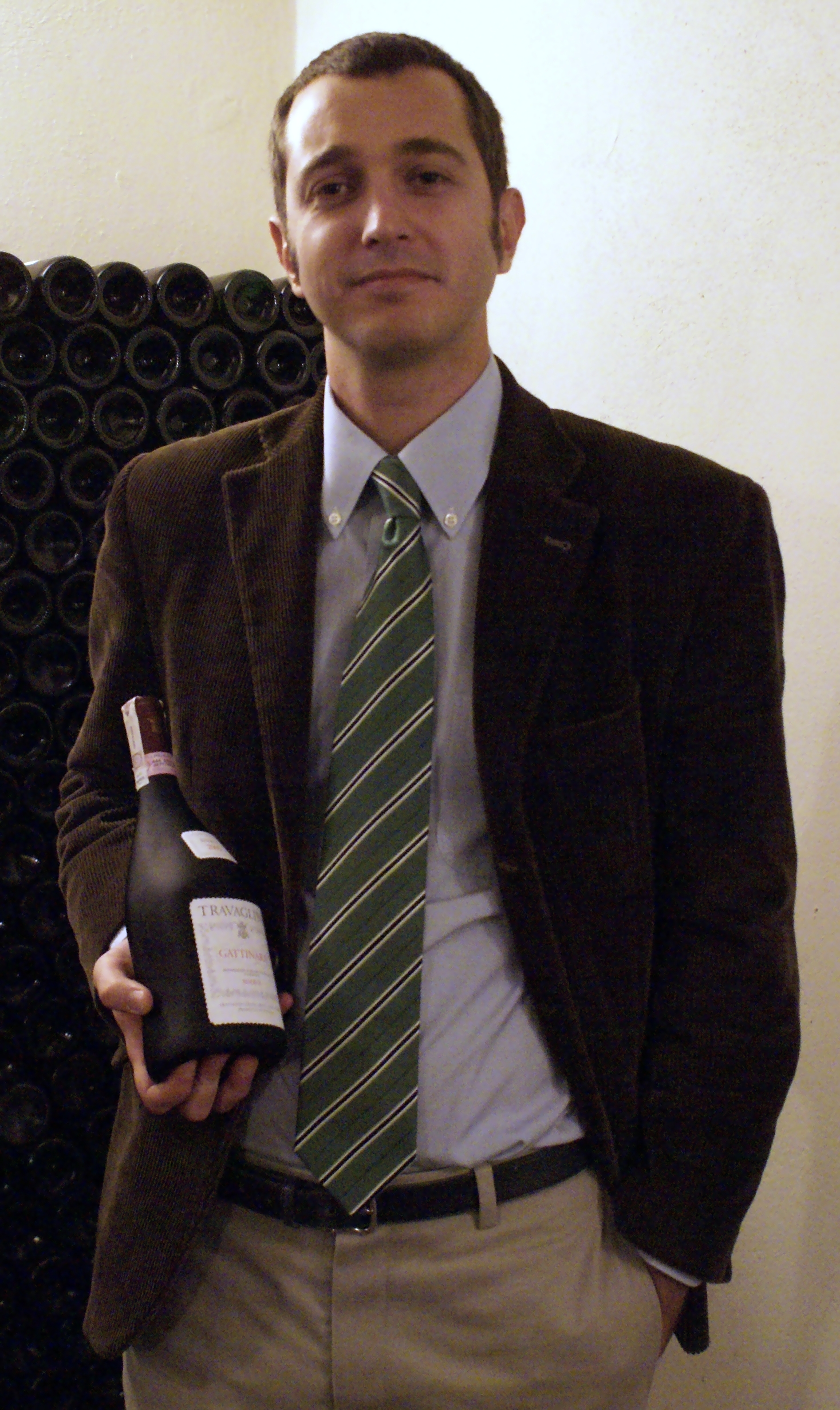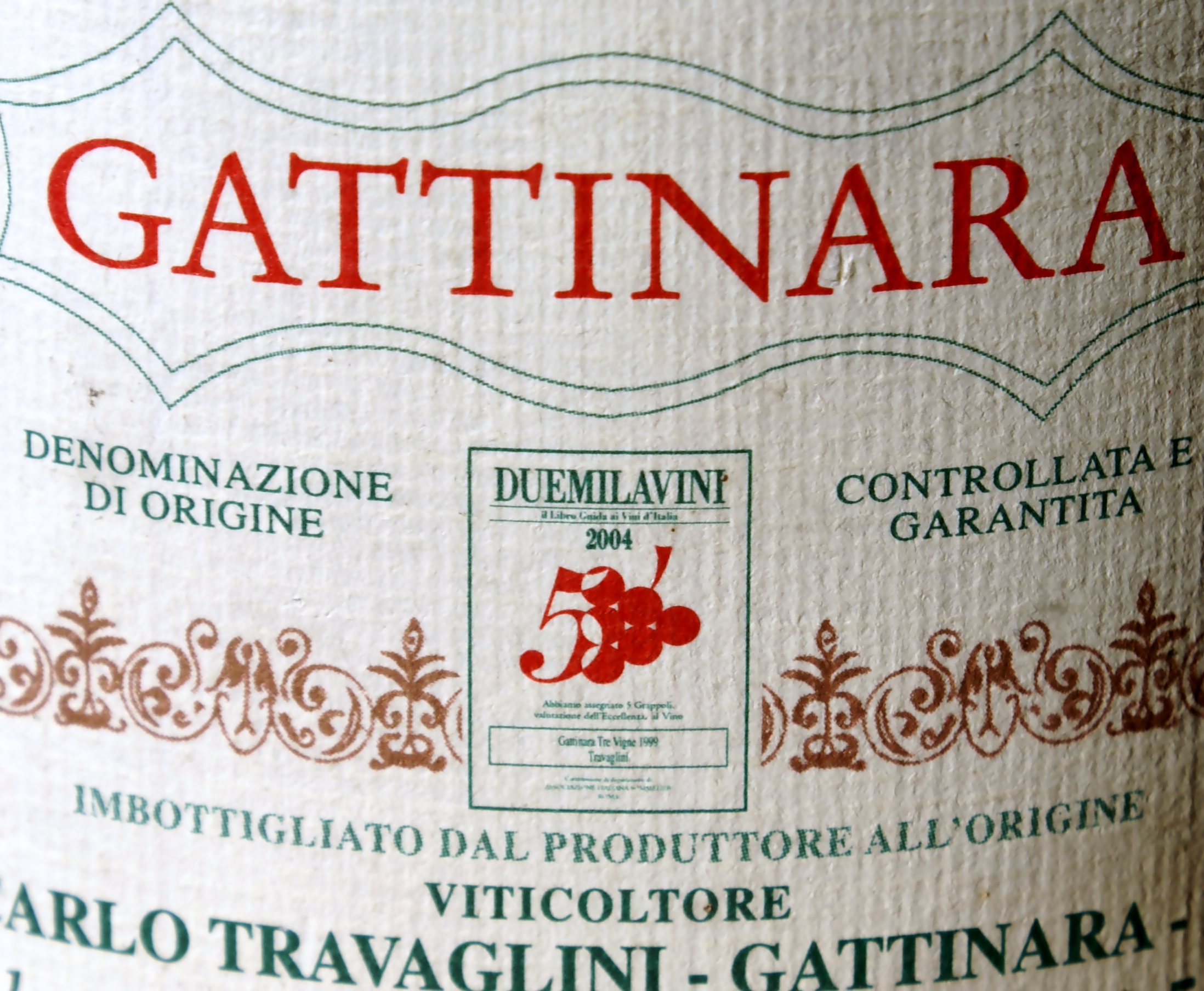Zesty Gattinara
Posted on 16 September 2011
What’s Gattinara? Even Italian wine buffs are not guaranteed to know. Yet it’s one of the most historical appellations in Piedmont, with more than 300 years’ record of excellence.
Gattinara produces red wine from the Nebbiolo grape, just like Barolo or Barbaresco. But bit lies some 150 km north of Barolo, in the Alps, on different soils – withered volcanic porphyrs and limestone – and the Alpine climate is quite harsher than Barolo’s, with long cold winters. As a result, the wines are more austere, tannic and acidic, with less upfront fruitiness. Austerity is the price to pay for amazing ageworthiness – Gattinara can really keep for 40 or 50 years.

Drink from 2035...
Gattinara is just 100 hectares! (And yet it’s the largest of a cluster of Nebbiolo appellations that include Ghemme, Boca, Lessona, and Bramaterra). Half of the 100 belong to Giancarlo Travaglini, a pioneer quality estate that remains the reference in this area. It’s at a Travaglini dinner last week that I brushed my teeth with these supertannic wines.
Young vines and production leftovers are used for Cinzia, a table wine retailing for around 6.50€. Amazingly, export manager Andrea Monti Perini said Cinzia is at its best at between 5 and 7 years of age. That’s probably the world record of longevity for a table wine. With the Coste della Sesia Nebbiolo 2009 (basically a declassified, young-vine Gattinara), I’d extend the drinking window to 10 years. You need to like tannins in your wine to enjoy this.
We tasted two vintages of the flagship Gattinara DOCG (more than 100K bottles are made, making it the most widely available Alpine Nebbiolo on the market). Judging by the 2006, a warm sunny vintage, you’d think all that talk about austerity and tannins is exaggerated. This wine has plenty of fruit and good density; the assertive blackcurrant aroma could almost pass for something more Mediterranean than Alpine. Travaglini is a fairly traditional estate, using large traditional oak casks for 3 years’ ageing (there only 10 to 20% barrique), but wines are fermented in rotary fermentors with automatic punching of the cap, resulting in those more vibrant, black fruits bouquets.
Just when you though Gattinara would be easy to digest comes the 2005, a much thinner, skinnier, bonier rendition of the appellation, supertannic and superacidic and difficult to manage without food. An excess of structure was also true about the Tre Vigne 2005 (a semi-riserva bottling with a bit more small oak and approachability in youth, at least nominally) and the Riserva 2005. The latter was undoubtedly the deepest wine here, but very tight and ungiving. Yet even with those massive abrasive Nebbiolo tannins it’s not at all like an overtannic Merlot or Syrah. The tannins and acidity of Gattinara (like Barolo) have something invigorating and untiring about them. They’re mighty, they’re excessive, but they’re natural for this grape and terroir; they’re not overextracted and stretched like a similarly tannic Syrah would be.
10, 20, 30, 40 years… Gattinara always gives the impression of being too young. At six years of age the Riserva seemed a wine just vatted and pressed. Keen to taste Gattinara at its slightly softer, I picked a bottle of Tre Vigne 1999 from my private cellar. Wrong. It’s not softer. It’s very tannic, and also searingly acidic – 1999 was a classic cool vintage, unlike most of the 2000s. A lot of energy in this bottle, though perhaps too challenging for many palates. This would be good with a wild boar or deer stew, or perhaps the rabbit braised in an entire bottle of balsamic vinegar a Belgian friend once cooked.
Gattinara is a unique wine, the perfect antidote to uniformed branded styles from around the world. It is refreshing both literally and in how old-fashioned it tastes. Let’s keep it that way.
Disclosure
Six wines and dinner kindly provided by the Travaglini winery and their importer; the 1999 was my own purchase of some years ago.



